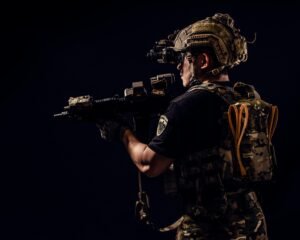Enhancing Tactical Awareness in Combat: A Comprehensive Guide
In the realm of tactical combat, enhancing tactical awareness is not just a skill but a critical advantage that can mean the difference between success and failure, victory and defeat. This guide delves into the essential strategies and techniques that can elevate your tactical awareness to new heights, enabling you to outmaneuver opponents and achieve your objectives with precision and efficiency.
Understanding Tactical Awareness
Tactical awareness encompasses the ability to perceive, process, and act upon relevant information swiftly and effectively during combat situations. It involves being acutely aware of your surroundings, the movements of allies and adversaries, and the changing dynamics of the battlefield. This heightened awareness allows for timely decision-making and strategic adjustments, maximizing the likelihood of mission success.
Developing Situational Awareness
Utilizing Environmental Cues
A key aspect of enhancing tactical awareness is developing keen situational awareness. This involves utilizing environmental cues such as terrain features, weather conditions, and ambient sounds to gather information about the battlefield. By leveraging these cues, combatants can anticipate enemy movements, identify advantageous positions, and adapt their tactics accordingly.
Leveraging Technology and Tools
In modern warfare and tactical operations, technology plays a pivotal role in enhancing tactical awareness. Tools such as drones, surveillance cameras, and night-vision equipment provide real-time intelligence, augmenting the situational awareness of military personnel and law enforcement agencies. Integrating these technological advancements into training and operations enhances decision-making capabilities and improves overall mission outcomes.
Cognitive Skills and Decision Making
Rapid Decision Making under Pressure
Enhancing tactical awareness requires honing cognitive skills such as rapid decision-making under pressure. Combat situations often unfold rapidly, necessitating quick and decisive actions. Training programs that simulate high-stress scenarios can improve response times and decision-making abilities, enabling personnel to react effectively to changing circumstances on the battlefield.
Strategic Thinking and Adaptability
Effective tactical awareness also involves strategic thinking and adaptability. Military leaders and tactical teams must be able to formulate and adjust plans in real-time based on evolving threats and operational requirements. By fostering a culture of flexibility and innovation, organizations can empower their personnel to respond dynamically to complex and unpredictable situations.
Training and Simulation
Realistic Training Scenarios
One of the most effective methods for enhancing tactical awareness is through realistic training scenarios. Simulations that replicate actual combat conditions allow personnel to practice their skills in a controlled environment, preparing them to perform effectively under stress. These training exercises not only improve individual proficiency but also foster teamwork and coordination among units.
Role of After-Action Reviews
After-action reviews (AARs) play a crucial role in the continuous improvement of tactical awareness. By reviewing performance outcomes and identifying lessons learned from training and operational experiences, organizations can refine their strategies and tactics. AARs promote accountability, encourage constructive feedback, and facilitate the adoption of best practices within military and law enforcement units.

Conclusion
In conclusion, enhancing tactical awareness is a multifaceted endeavor that combines cognitive skills, environmental awareness, technological advancements, and strategic thinking. By developing comprehensive training programs, leveraging cutting-edge technology, and fostering a culture of continuous improvement, organizations can empower their personnel to achieve superior outcomes in tactical operations.
















